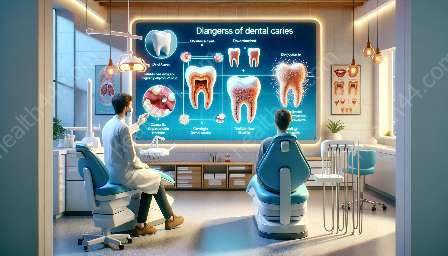Speech is a fundamental aspect of human communication, and oral health plays a significant role in shaping speech patterns. Individuals with good oral health may exhibit different speech patterns compared to those with poor oral health. This article explores the potential differences in speech patterns between these two groups, and discusses the effects of poor oral health on speech.
Understanding Speech Problems
Speech problems can encompass various issues, including difficulties in articulation, pronunciation, and voice quality. These issues can arise from physical or physiological factors, including oral health concerns. Poor oral health may contribute to speech problems in several ways.
Effects of Poor Oral Health on Speech
1. Articulation and Pronunciation: Individuals with poor oral health, such as untreated dental caries or missing teeth, may experience challenges in articulating certain sounds or pronouncing words accurately. This can be attributed to the impact of dental conditions on the tongue and oral structures involved in speech production.
2. Voice Quality: Poor oral health, particularly conditions affecting the teeth, gums, or palate, can influence voice resonance and overall voice quality. This may result in alterations in pitch, tone, or clarity of speech, impacting the individual's ability to communicate effectively.
Differences in Speech Patterns
When comparing speech patterns between individuals with good and poor oral health, several notable differences may emerge:
- Clarity and Enunciation: Individuals with good oral health may demonstrate clearer and more precise enunciation due to the absence of oral health-related impediments. In contrast, those with poor oral health might exhibit reduced clarity in speech.
- Consistency in Sound Production: Good oral health can contribute to consistent and reliable sound production during speech, while poor oral health may lead to intermittent or inconsistent speech patterns.
- Speech Rate and Flow: Individuals with poor oral health might experience disruptions in speech flow or alterations in speaking rate, potentially impacting the overall fluency of communication.
Speech Therapy and Oral Health
For individuals experiencing speech problems related to poor oral health, speech therapy tailored to address oral-motor coordination and articulation can be beneficial. By addressing underlying oral health issues and implementing targeted therapy, individuals can work towards improving their speech patterns and overall communication skills.
Conclusion
Overall, oral health has a substantial influence on speech patterns and communication abilities. Understanding the differences in speech patterns between individuals with good versus poor oral health can shed light on the importance of maintaining oral health for optimal communication. By recognizing the effects of poor oral health on speech, individuals can take proactive steps to address oral health concerns and seek appropriate interventions to enhance their speech and overall quality of life.



